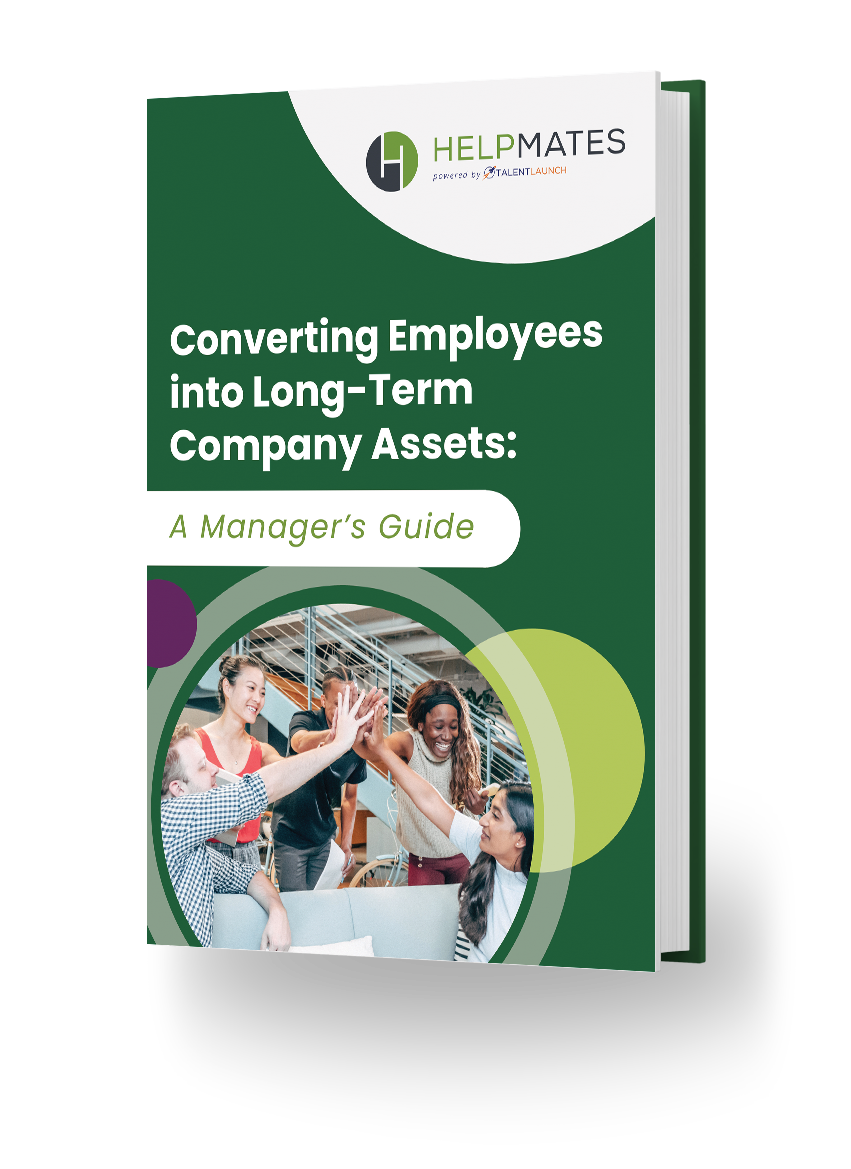You’ve learned how a comprehensive onboarding program helps lay the foundation for long term success. You’ve tweaked your employee development strategy and are well on your way to building a continuous learning culture. You’ve even downloaded our free performance review template for your employee assessment program.
Now, you’re ready for the fourth step in our recruitment and retention strategies series: how to improve and maintain a positive workplace culture.
The Importance of Improving Workplace Culture
Even if you do everything right from recruitment to employee onboarding, your company’s work culture can make or break your entire retention strategy.
Creating and maintaining a positive work environment is important because it’s the bedrock of a successful organization. Not only does it attract top talent, it creates a more productive environment that drives employee engagement. Employees thrive (and stay longer) when they feel valued, supported, and motivated to perform their best.
That’s why making culture part of your employee engagement and retention strategy should not be overlooked. But what exactly does that look like? Read on for examples of good workplace culture.
3 Examples of Good Work Culture

Example #1: Supportive, Inclusive, and Engaging Work Environments
A positive workplace culture has three key drivers: support, inclusivity, and engagement. These elements build a sense of camaraderie and trust among staff, leading to higher job satisfaction, increased morale, and reduced turnover rates.
Supportive Environment
Provide a safe and supportive workplace that encourages employees to openly share their ideas, concerns, and aspirations. In turn, you’ll likely experience improved collaboration and problem-solving.
Inclusivity at Work
Emphasize an inclusive culture at work and diversity among your teams. Celebrate individual differences and actively work to ensure that everyone feels welcomed and embraced, regardless of their background or identity. This creates a sense of belonging and mutual respect among employees.
Employee Engagement
Gallup defines employee engagement as “the involvement and enthusiasm of employees in their work and workplace” — and high engagement is vital to your organization’s success.
Take a personalized approach to engagement. Learn the unique needs and preferences of your employees, then use them as the drivers of your engagement strategy. Engaged employees are motivated employees who advance your organization forward instead of holding it back.
Personalized Engagement Examples
Tailored Benefits: In addition to the basics (medical, dental, and retirement plans) consider including things like fertility coverage, adoption financial assistance, paid time off for volunteering, reward and discount programs, child care assistance, wellness plans, etc.
Employer-Sponsored Education Benefits: 87% of workers believe employers should be investing in their continued education. From leadership and training certificate programs to new degrees in skilled trades, education benefits are a valuable way to upskill and reskill employees.
Recognition Programs: For some employees, a simple ‘thank you’ is all they need for a job well done — and for others, small tokens of appreciation go a long way. Helpmates uses Cooleaf, an internal social platform that helps employees connect and recognize each other.
Social Events: Monthly happy hours, birthday celebrations, family-friendly events — whether it’s onsite or offsite, get social and connect outside of the regular workday.
Town Halls: Transparency is king. Host company-wide town halls on a monthly or quarterly basis. Share company news and updates, celebrations and milestones, solicit feedback, and facilitate conversations between all levels of employees.

Example #2: Collaboration and Teamwork
You’ve heard the age-old adage: Teamwork Makes the Dream Work.
Collaboration and teamwork includes open communication that drives a strong and cohesive workforce. Implement initiatives among employees and departments that are work and non-work related, like these examples:
- Monthly team lunches or dinner (no work talk allowed!)
- Offsite volunteering opportunities
- “Get To Know You” activities
- Cross-departmental project collaboration
Breaking down silos and encouraging idea-sharing allows long-term staff to work together at all levels, driving innovation and efficiency.
Example #3: Prioritizing Employee Wellness and Work-Life Balance
Work-life balance and employee wellness are vital factors in retaining top talent. Consider these statistics:
- 68% of company leaders rank employee well-being as a top priority
- 46% of employee expectations around workplace happiness has increased in just one year
- 29% of employees with flexible schedules are more productive
- Companies offering flexible work are adding headcount twice as fast as companies that require mandatory in-office work
Implement policies and programs that support employee work-life balance and well-being, such as:
- Flexible schedules
- Hybrid and remote work
- Wellness initiatives
- Floating holidays for religious holidays and heritage days
- Generous PTO
- EAP (Employee Assistance Programs)
- Diversity, Equity, Inclusion, and Belonging
By prioritizing employee well-being, you foster a positive work culture where long-term employees feel cared for and valued.

Key Takeaways: Improve Your Workplace Culture
- A positive workplace culture is vital for employee engagement and retention
- Support, inclusivity, and personalized engagement drive employee motivation and satisfaction
- Collaboration and teamwork foster innovation and efficiency
- Prioritizing employee wellness and work-life balance is essential for fostering a healthy and productive workplace
Next Up: The Value of Staffing Agencies for Talent Solutions
In the next installment in our recruitment and retention strategies series, you’ll discover how partnering with staffing agencies can help you find and retain top talent, further contributing to your organization’s long-term success.
Can’t wait? Get the free e-book now!





